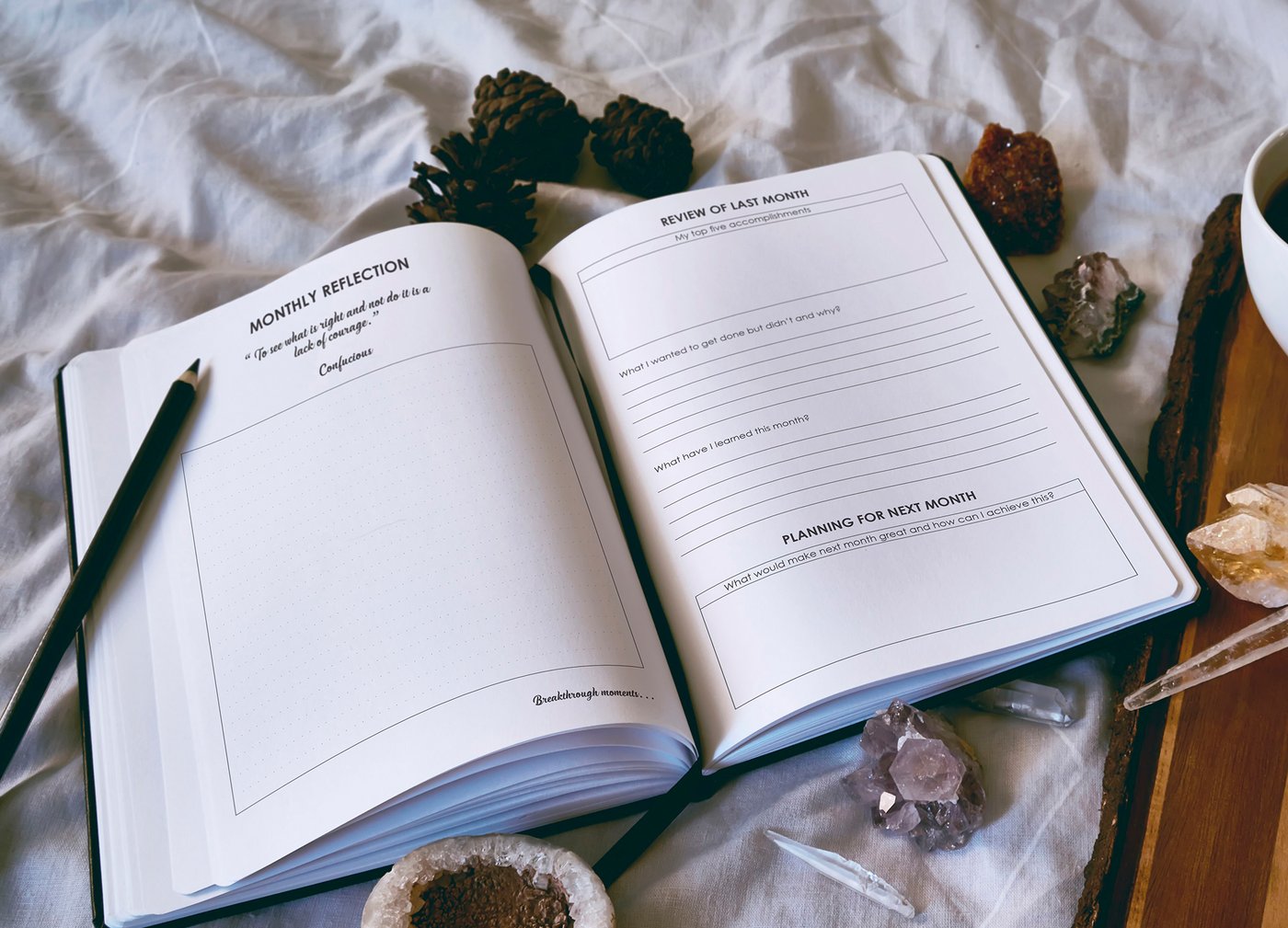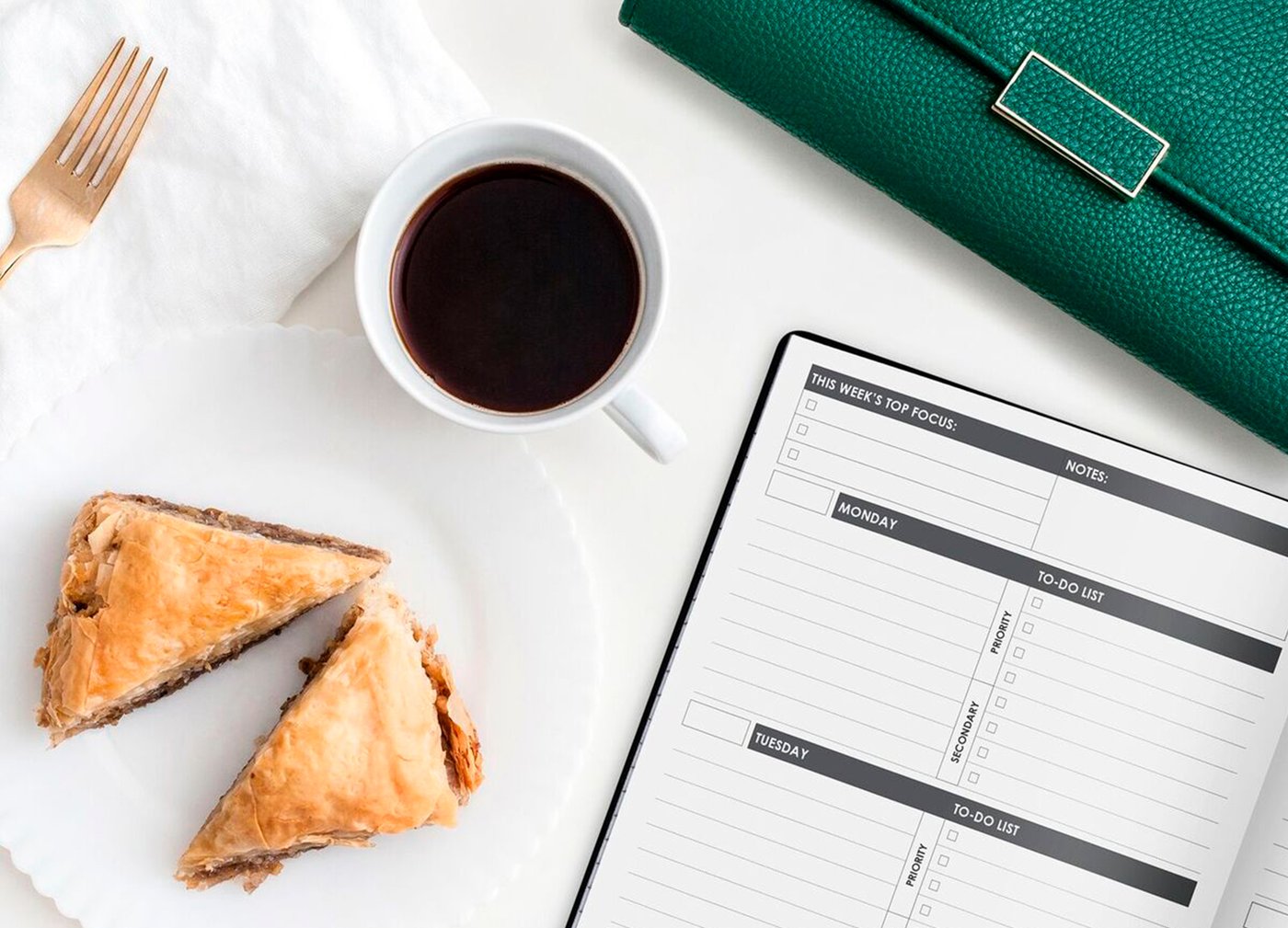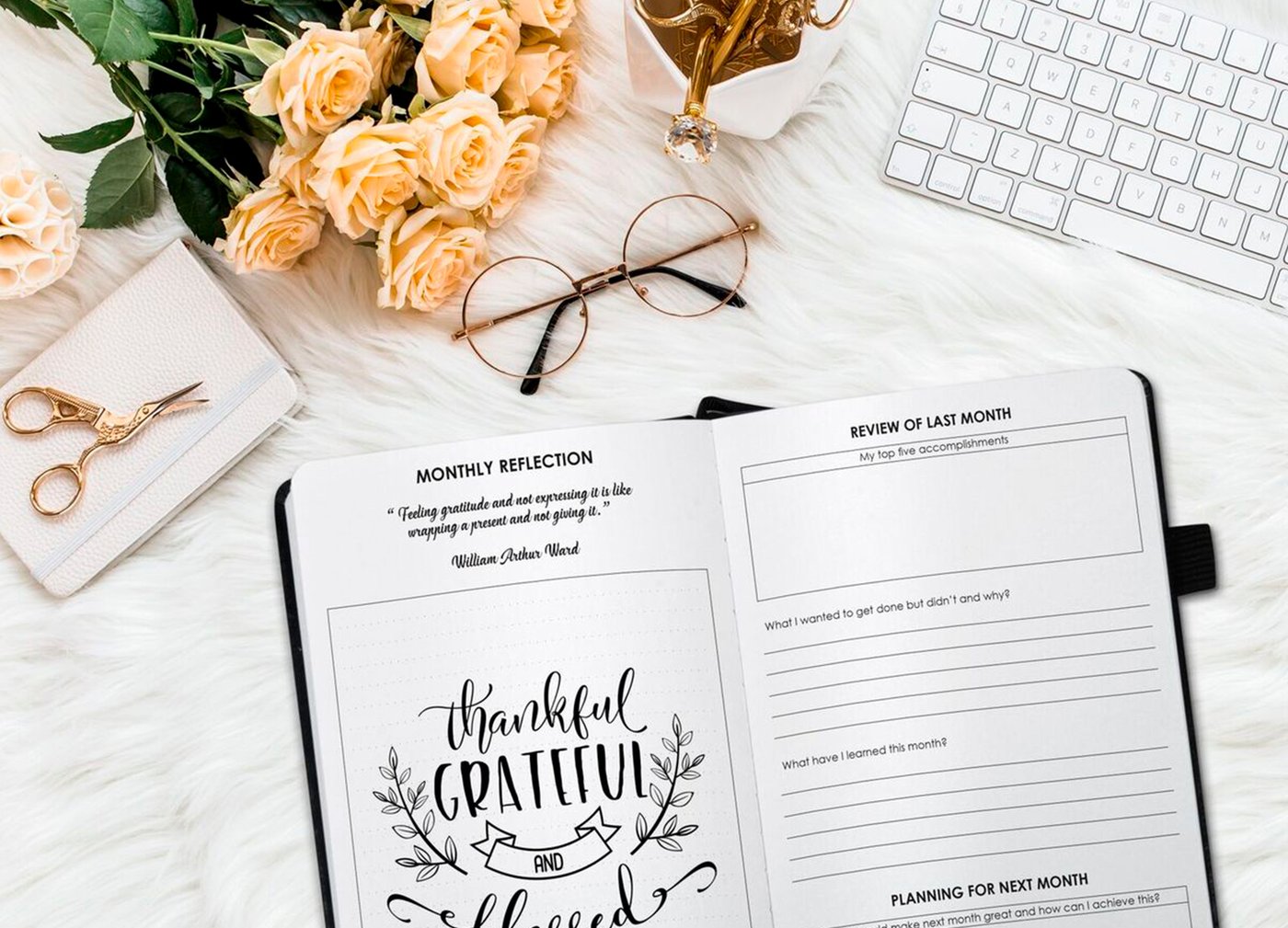There's an app for that.
That's true. We live in a very convenient world now. The old ways of pen and paper may arguably be going extinct.
But there's a truth many planner enthusiasts would agree on - in no way do modern devices and apps stop planners from getting out of style. The reason is obvious - planners are still the most reliable productivity tool there is. If you use it well, it would strongly get you organized enough to make sense of your life.
However, if you haven't used any planner before, our planners are going to prove a good beginner's tool - all 256 pages of it. Let this walk-through convince you.

THE IMPORTANT ELEMENTS
There are key elements in our planners that will make this a unique experience for every user. Even if you haven't seen it, we've made it easy to navigate through our pages. It should be a seamless experience because we've removed the usual clutter and added some nice extra features.
If you plan on using the planner regularly, you'll find that you have become more attuned to your needs, your ability to manage your time and have acquired a lifelong skill in the end.
The bonus? You've become a better version of yourself with how well you are handling your day to day and being productive in every step.
Your Wordsworth Planner will be a master plan and a testament to how far you would go to see it through. So if you don't know where to begin this process, here are the important elements of our planner you need to know:
Instructions/Users Guide - Not all planners begin with a complete user's guide. Often times, a user is left to figure out what happens at the beginning. Our planners are unique because they begin with a blueprint of the process. The premise of having a planner is to provide structure into your planning. You can use it well only if you maximize on its benefits from the start. This is why you will be taken to a core process - where you need your mind to be and how to make your planners work. The user's guide is a seminal overview. You will have to read this in order to know our real intentions for creating this planner, our mission and our ardent hopes for the user.

Benefits - There's probably a good reason why you chose our planner above all others. That's what we are banking on. This planner, in all intents and purposes, will be an asset to you and your life. The planner lists down plenty of advantages for using its system. As you read through them, we are confident in the hopes that a lot of your needs would have been checked off.
Advanced Calendar - Every planner comes with an advanced dated calendar for 2018 until 2021. It's made advanced so you can use your planner well into the future. This is also to make checking dates very convenient for the user.

World Map - A planner is never complete without a world map - ours is integrated with the time zones as a value-added feature on. This service is added to support the next page which is where you list your travel destinations and itineraries.

Travel Plans - This is the part where all future travels will have started. You can pencil in all travel goals here - even their proposed dates. It's a space where a lot of bucket list destinations will be marked in. There are two pages of dedicated spaces to get lost in. Mark these destinations and add why you're interested in them. They will serve as reminders for what you need to prepare before the travel dates. There's even room to paste in your past travel mementos and keepsakes.

Goals Mind Map - After all the necessities are done, the next step is to focus on how to set your goals - from the smallest down to your most unfulfilled big dreams. Mind mapping, if you have no idea how to begin, is a strategy to create steps in goal setting. Our mind is so easily distracted when you really think about it. Most of the time, we can't distinguish which goals should take the least precedence over another. Mind mapping helps you get to the root of it all. Once you master mind mapping techniques and dissect your goals according to actionable plans, this page will be an access point to the rest of the months, weeks and days. Make sure to lead with this in mind.
Vision Board Inspirations - There's a tagline you will find in this two-page space -"People, Places, Photos, Quotes". This will be your baseline inspiration board. Consider them a groundwork for what success should look like for you. A Vision Board is a blank space to start but as soon as you clip in photos, quotes, places, and people who will contribute to achieving a specific goal, it will become your mind's dream panel. As used in popular context, a vision board is a tool for attracting what you want to happen. This helps give your goals clarity. When you know what you want in life, you'll work tirelessly to make it happen. This is where the magic happens.
General Goals and Target dates - Those who failed to figure out their goals will get a chance to revisit this task on these six pages. However, this is where things get more serious and more personal. Goal setting in this context will be broken down into 3 facets: personal, family and friends, and the professional or the top three (3) needs of every individual. This is the proper forum to tackle plans, ambitions, actions - everything which involves your general aspirations in life. You can't miss this part because there are specific target dates to be elected for each goal. The true purpose for these dates is to hold you accountable so you don't slack off.

Specific Monthly Goals - In relation to the general goals set above, this section similarly lets you create top three (3) goals for the month. Actually, when you're not keen on making general goals and prefer to make them on a monthly basis, this is where you start. Goals are still sectioned off into the personal, family and friends, as well as the professional aspects. At the beginning of each month, you have the chance to position three goals for each section. Therefore, you'll have to do some more thinking on this process. You'll be pushed to choose the most weighted ones and their target dates for the month. Accountability always follows each goal setting so a date is mandatory at this point.
Blocked daily entries (undated) - You'll be more familiar with this section of the planner as it closely resembles a blocked calendar. There are no dates specified all throughout this full spread so you can begin any time of the month. You can tackle 30 or 31 days of tasks here. It's a summarized view of what the month will look like so this is where you mark permanent dates and events like holidays, birthdays and anniversaries.

Monthly Reflection Sheet - Your planner is also where you get to write about an important milestone in your life - as it happens, when it happens. At the end of each monthly blocked section, you have a space for writing details about what has happened in the past month."Breakthrough Moments", should you be blessed with them, can have a dedicated space in your planner forever. So don't waste this chance to check in with yourself.
Review of the Month and Plans for the next - If you're the type that enjoys reviewing your monthly activities, this is the page you'll find most appealing. We've structured it to make accurate evaluations. First, you get to celebrate your achievements for the month - a gauge as to how productive you've really become in conjunction with your monthly goals. In the off chance that you've missed out on a task, there's a space to explain why this was so. Allow for some lessons as well as newly revised plans when closing out each month. Note that this process repeats so there are 12 chances to get it right.

Weekly Overview Pages - If you find that monthly planning isn't specific enough, this weekly overview might work for you. In full spread, the weekly overview pages start off with one target focus and a space where you can enumerate action plans geared towards this focus. That will be your meter for creating your daily updates. The week begins on a Sunday and each day will start and end the same way with these assignments - gratitude statements and a daily to-do list.

To-Do List - The highlight of your daily entries would be your top priorities for the day. It's simplified according to the primary and secondary tasks. This way, you will not have any difficulty assigning what tasks should come first.
15 Waking Hours - Every day begins at 6 AM and you're then afforded 15 waking hours to be as productive as you can make your day to be. Your schedule is arranged vertically for an easy read.
Weekly Reflection Sheet - The same opportunity to review your past activities is provided in a reflection space at the bottom part of each page. It's a small but powerful add-on specifically to make reviews a daily/weekly habit.

EXTRAS
Don't be overwhelmed by what you see. As a productivity and development tool, the layout has a purpose and meaning. You're meant to explore it beyond its basic uses. So we've added in some valuable "extras":
- Grid and Lined pages - There are a lot more dedicated spaces provisioned for whatever purpose. For example, this could be where you write your grocery lists. Some people use it to brush up on their drawing skills by doodling. The spaces are left blank with nothing but lines or grids on them. This is available on all our planners.
- Motivational quotes - When you need a push on slow days, this will be your source of inspiration. Feel free to add your own quotes and goal-setting guides. The more you see them, the better it is for motivating you.
When opening up our planner for the first time, you'll find it resembles a laid-out storybook. As a matter of fact, it sort of is - it soon will be filled up with snippets of your life, thoughts and even musings, after all. A reader would find a piece of you on every page and might even put together a novel from your life story. We hope it serves you well, dear reader.





